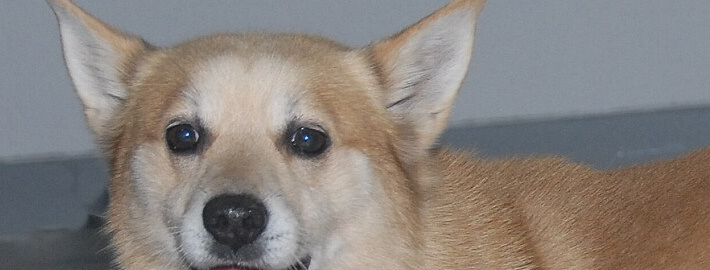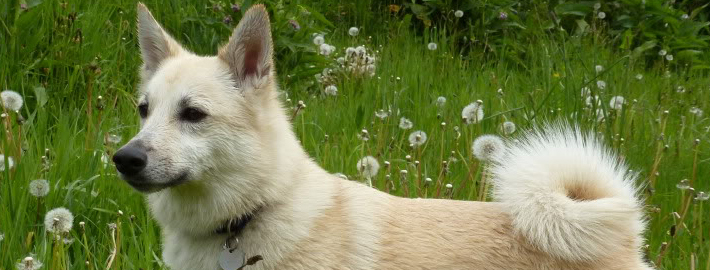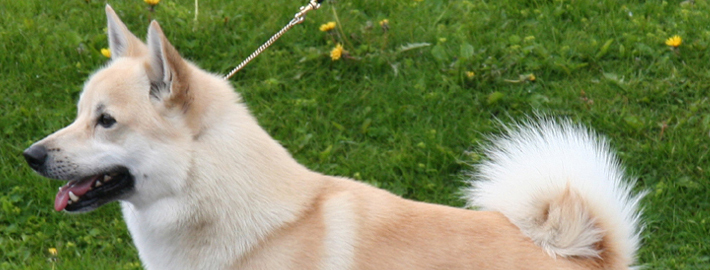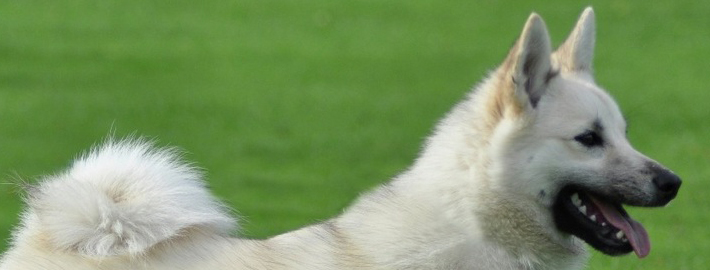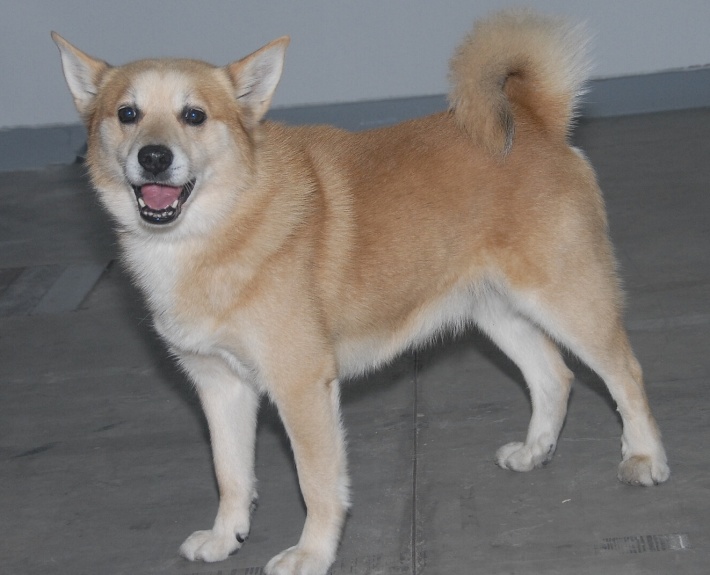What makes the Norwegian Buhund Unique?
Members of this breed make great companions for energetic human beings who can provide them with a job to perform. In fact, Buhunds have a long history of service in their homeland where they are still serving their original purpose as farm dogs to this very day. However, these intelligent dogs do require plenty of mental stimulation and exercise to be at their best so they may not be the best choice for every household.
Breed Groups
Page Contents
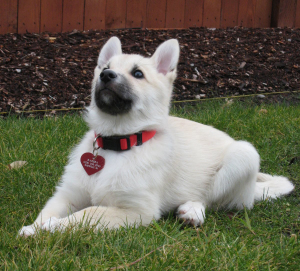
Is the Norwegian Buhund Right For You?
Norwegian Buhunds have very friendly and affectionate personalities. These dogs get along quite well with their human family members, especially the children. Members of this breed will get along just fine with pets if they have all been together since their youth.. While Buhunds are fearless when the occasion calls for it, they are not often prone to aggressive behaviors. In fact, these dogs are unlikely to bite human beings without provocation.
In 5 Words
- Fun -loving
- Agile
- Energetic
- Friendly
- Courgeous
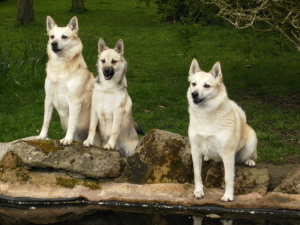
Characteristics
Learn About the Norwegian Buhund
Description
General Description
Members of this breed have square bodies that are slightly smaller than average. These dogs possess level spines, deep chests, wedge shaped heads, black noses, and upright ears. Like most members of the Spitz family group, these dogs have curled tails that are carried high over their backs. Dark, oval eyes are yet another breed feature. Buhunds have teeth that should meet in a scissors bite. .As is the case for most dogs that still function in their original job capacities, the American Kennel Club’s breed standards state that “broken teeth and honorable scars incurred in the line of herding duty are [considered to be] acceptable.”
Size
Buhunds typically stand about 16 to 18.5 inches (40.6 to 47 centimeters) at their shoulders with female dogs of this breed being about an inch (2.5 centimeters) shorter than their male contemporaries. Male Buhunds generally average between 31 and 40 pounds (14 to 18 kilograms) in weight. Female dogs are lighter with 26 to 35 pounds (12 to 16 kilograms) being the average for their gender.
Coat
Members of this breed have thick double coats that help them endure the cold climate of their homeland. Coarse, fur makes up the flat-lying outer layer while the inner layer is softer in texture. Longer hair may be present on the dogs’ thighs, necks, and chests. However, the fur found on their heads and forelegs is somewhat shorter. Buhunds are typically wheaten or black in color but some may also be grey. Acceptable markings for members of this breed include black masks and limited white patching on the dogs’ necks, faces, feet, or tails.
Short History of the Norwegian Buhund
The Vikings believed that if they were buried with their most beloved possessions these things would accompany them into the afterlife. Buhunds were clearly well thought of in ancient times because one pet owner from the 10th century attempted to take all six of his dogs with him when he departed this earth. This burial clearly illustrates the fact that wherever the Vikings traveled, they brought these useful breed along with them.
Traditionally, Buhunds served as multi purpose farm dogs. They could herd livestock as well as guard estates and the people in them. They also helped their owners hunt bears and wolves. However, the elegant modern version of the breed owes its’ ancestry to the shepherd dogs found on coastal Norwegian farms.
Buhunds made their way to the show ring by the 1920s. Two decades later the first official breed club had been established. The United Kennel Club recognized the Buhund breed in 1996. Sixteen years later, these dogs were officially accepted to the American Kennel Club’s herding group.
Temperament
Norwegian Buhunds have very friendly and affectionate personalities. These dogs get along quite well with their human family members, especially the children. Members of this breed will get along just fine with pets if they have all been together since their youth.. While Buhunds are fearless when the occasion calls for it, they are not often prone to aggressive behaviors. In fact, these dogs are unlikely to bite human beings without provocation.
While their alertness makes them good watchdogs, excessive barking can become problematic for improperly trained members of this vocal breed. These dogs would probably not be a good pet choice for someone living in an environment where extraneous noise is likely cause a problem. Prospective owners should also note that these dogs have a high need for both human attention and exercise so they may want to think twice about adopting a Buhund if they are too busy to spend lots of time with their pet.
Caring for Your Norwegian Buhund
General Health
Members of this breed are generally healthy individuals. In fact, these dogs have an average lifespan of twelve or more years. However, instances of hip dysplasia and various eye ailments have nonetheless been reported in Norwegian Buhunds.
Care
Daily
Buhunds need about an hour of exercise on a daily basis but some dogs may benefit from longer workout periods. Members of this breed also require sufficient amounts of mental stimulation to remain at their best.
Weekly
Buhunds should be brushed a few times per week but will need more frequent grooming twice a year when they are shedding their coats. It is also important for owners to clean their pet’s teeth a few times per week using a canine toothbrush and dog toothpaste so that the pet in question maintains good oral health.
Monthly
Parasite prevention medications are a must for all dog breeds. Typically, these products are administered on a monthly basis.
Grooming & Bathing
Members of this breed will need to be bathed about once a month using a gentle dog shampoo. It is also recommended that owners trim their pet’s nails as needed to keep injuries from occurring.
Exercise & Training
Given their high intelligence and their need for activity, it is no surprise that Buhunds are so easy to train. However, learning is a lifelong process for these dogs. Obedience training should be begun early and continued throughout the course of a dog’s lifetime to prevent any number of undesirable behaviors from taking root.
Positive reinforcement methods work well for these dogs. Short instruction periods are likewise recommended as a training tool because otherwise the dogs will get bored and be unwilling to actively participate. After all, obstinate behavior is not unheard of in members of this breed.
Buhunds are good candidates for dogs sports but they also enjoy long walks, learning tricks, and playing games. Running is another favorite pastime for members of this breed. Therefore, these dogs might appreciate spending some time at a local dog park where they’re allowed to get off their leashes for a time.

